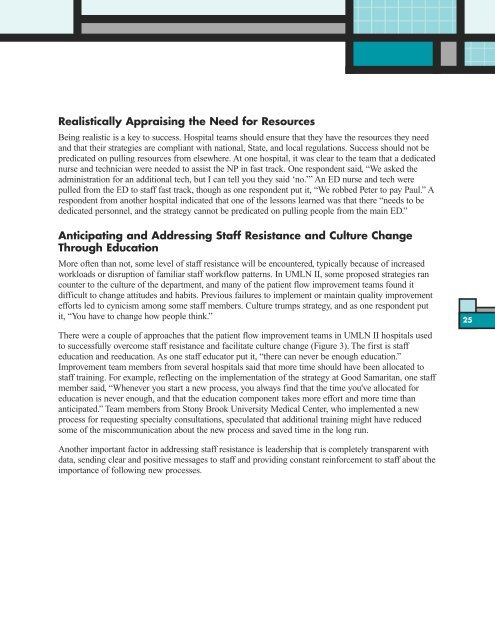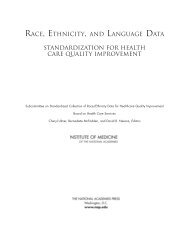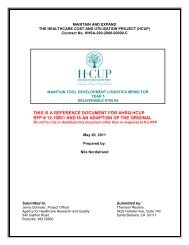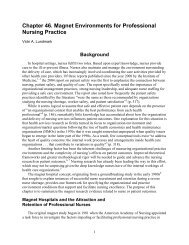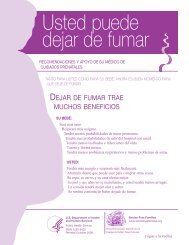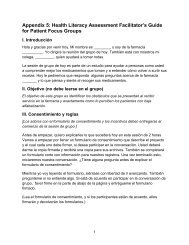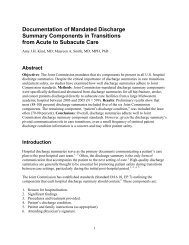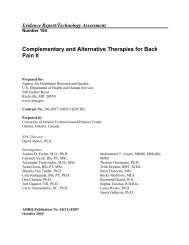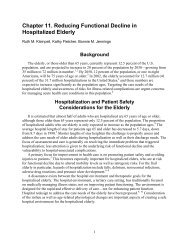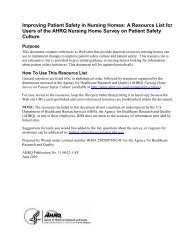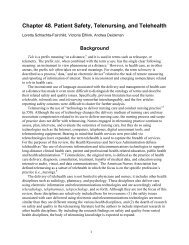Improving Patient Flow and Reducing Emergency Department ...
Improving Patient Flow and Reducing Emergency Department ...
Improving Patient Flow and Reducing Emergency Department ...
You also want an ePaper? Increase the reach of your titles
YUMPU automatically turns print PDFs into web optimized ePapers that Google loves.
Realistically Appraising the Need for Resources<br />
Being realistic is a key to success. Hospital teams should ensure that they have the resources they need<br />
<strong>and</strong> that their strategies are compliant with national, State, <strong>and</strong> local regulations. Success should not be<br />
predicated on pulling resources from elsewhere. At one hospital, it was clear to the team that a dedicated<br />
nurse <strong>and</strong> technician were needed to assist the NP in fast track. One respondent said, “We asked the<br />
administration for an additional tech, but I can tell you they said ‘no.’” An ED nurse <strong>and</strong> tech were<br />
pulled from the ED to staff fast track, though as one respondent put it, “We robbed Peter to pay Paul.” A<br />
respondent from another hospital indicated that one of the lessons learned was that there “needs to be<br />
dedicated personnel, <strong>and</strong> the strategy cannot be predicated on pulling people from the main ED.”<br />
Anticipating <strong>and</strong> Addressing Staff Resistance <strong>and</strong> Culture Change<br />
Through Education<br />
More often than not, some level of staff resistance will be encountered, typically because of increased<br />
workloads or disruption of familiar staff workflow patterns. In UMLN II, some proposed strategies ran<br />
counter to the culture of the department, <strong>and</strong> many of the patient flow improvement teams found it<br />
difficult to change attitudes <strong>and</strong> habits. Previous failures to implement or maintain quality improvement<br />
efforts led to cynicism among some staff members. Culture trumps strategy, <strong>and</strong> as one respondent put<br />
it, “You have to change how people think.”<br />
There were a couple of approaches that the patient flow improvement teams in UMLN II hospitals used<br />
to successfully overcome staff resistance <strong>and</strong> facilitate culture change (Figure 3). The first is staff<br />
education <strong>and</strong> reeducation. As one staff educator put it, “there can never be enough education.”<br />
Improvement team members from several hospitals said that more time should have been allocated to<br />
staff training. For example, reflecting on the implementation of the strategy at Good Samaritan, one staff<br />
member said, “Whenever you start a new process, you always find that the time you've allocated for<br />
education is never enough, <strong>and</strong> that the education component takes more effort <strong>and</strong> more time than<br />
anticipated.” Team members from Stony Brook University Medical Center, who implemented a new<br />
process for requesting specialty consultations, speculated that additional training might have reduced<br />
some of the miscommunication about the new process <strong>and</strong> saved time in the long run.<br />
Another important factor in addressing staff resistance is leadership that is completely transparent with<br />
data, sending clear <strong>and</strong> positive messages to staff <strong>and</strong> providing constant reinforcement to staff about the<br />
importance of following new processes.<br />
25


